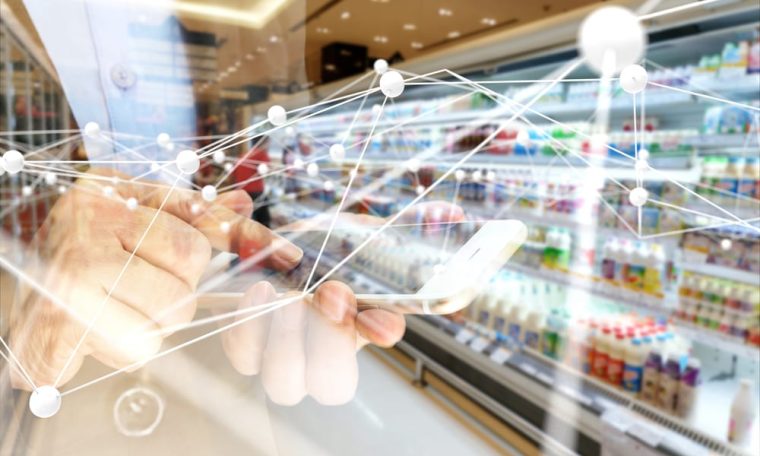
AI technology can give retailers a significant competitive edge. Read this article to find out how exactly retail businesses can benefit from AI-powered tools!
Many retail businesses already benefit from AI-powered solutions. In the next few years, the demand for AI-based tools is only likely to increase. In this article, we’ll analyze how exactly retail companies use AI technology and which goals it enables them to achieve. After reading this article, you might consider integrating AI-powered solutions in your workflows as well.
Cashier Free Stores
Amazon, Decathlon, and McDonald’s are among the most well-known pioneers of this technology. When paying for their purchases, customers don’t need to interact with human cashiers. Instead, they use automated checkout machines that scan the barcodes and calculate the number of purchased items. Such machines can accept various payment methods, including contactless.
This technology can reduce waiting time and help shops get rid of lines. No errors take place because of human factors. Shop owners won’t need to hire and train human cashiers and pay monthly salaries or other types of compensation to them.
Chatbots
Chatbots can carry out the following functions for an online business:
- Greet clients as they open the site
- Answer their questions
- Suggest new, alternative, or matching products to them
- Inform them about new collections, discounts, and promotional offers
Thanks to such bots, you should be able to expand your client base, retain more customers, improve consumer satisfaction, boost your sales, and maximize your revenue.
The simplest bots can offer clients a set of the most popular questions. When the client clicks on a question, the bot will show a predefined answer to it. More advanced chatbots allow customers to type in their questions and provide personalized answers. Such bots can learn from their previous experiences and continuously improve their quality of service.
Chatbots gather large amounts of valuable data that businesses can analyze. For instance, you can find out which questions people tend to ask the most frequently and share answers to them in the FAQ section of your site.
Chatbots are compatible with various platforms: websites, mobile apps, and social media. If you sell your products through Instagram, your bot can attend to consumers right in this social network.
On the flipside, chatbots can’t fully substitute human professionals. Some customers might feel more comfortable talking to a fellow human. Or a bot might fail to meet the customer’s demands. The main drawback of using the services of a human specialist is that the client might need to wait if all the support staff is busy. Chatbots, meanwhile, respond to customer queries instantly.
Price Regulation Strategies
The ability to process huge amounts of data is one of the most important competitive benefits of AI. AI-powered solutions can read and interpret the statistics according to the following parameters:
- Demand
- Seasonal trends
- Characteristics
- Customer choices
- Release date of new models
- Earlier transactions of your business
- Promotional activities
- Sales figures in the market
You’ll be able to visualize the likely outcomes of multiple pricing strategies. The price that AI will recommend can help you to remain competitive in the market and generate sustainable profit. That’s the strategy that eBay and Kroger stick to because they value the flexibility of AI-based pricing policy. AI provides them with the timely information that they need to adjust their prices and promotions. Fluctuations in price lead to updates in the customer base. A smart pricing policy helps companies to attract new clients and retain them.
Virtual Fitting Rooms
You might have come across this technology in Levi’s, Gap, Brooks Brothers, or Old Navy stores. The COVID-19 pandemic gave a big boost to virtual trial rooms. This is how they work: the consumer provides an image of their body to the store. The AI of the virtual fitting room analyzes the image and recommends clothes that will look stunning on the person. Such an approach helps consumers to achieve the following goals:
- Save time
- Save money from travel expenses
- Try on things comfortably in their own homes without distractions
- Stay happy because everything they try on matches them perfectly
Virtual fitting rooms enable businesses to boost their sales almost immediately after they integrate this technology. Clients eagerly spread the word about this novelty among their friends, colleagues, and family members. Such rooms serve as a great tool for minimizing customer churn and improving their loyalty.
Product Categorization and Inventory Management
“Improved product categorization and inventory management” might sound like something complicated. Yet in fact, it means the following: when a customer starts to look for a particular product or category, they can find it in a couple of seconds. They don’t need to search all around the shop or ask an assistant for help.
Besides, AI enables stores to get and update the following information about each item on sale:
- Image
- Video
- Size
- Price
- Characteristics
- Availability
It will take the consumer only a few seconds to check whether the product meets their expectations. Businesses can quickly detect when they’re running out of stock of certain products and replenish their stocks.
Feedbacks and Prediction
Once a customer has finalized a purchase, an AI-based solution can ask them about their shopping experience. Later on, AI will use the information from the feedback to personalize clients’ experiences. For instance, it will inform the consumer about relevant sales and offers.
Businesses can use the feedback data to improve their product lines and quality of service. Managers won’t need to analyze the gathered statistics themselves. AI will process the information, generate insightful reports, and come up with smart suggestions.
Conclusion
Hopefully, you found this article informative and now you better understand the importance and usage of AI in retail. Businesses can rely on AI-powered solutions to replace human cashiers and support managers, build price regulation strategies, and offer virtual fitting rooms to their customers. AI is indispensable for gathering feedback, making predictions, categorizing products, and carrying out inventory management. These are the most popular cases of applying AI in retail — but companies may find many other ways of using this technology in the future.



